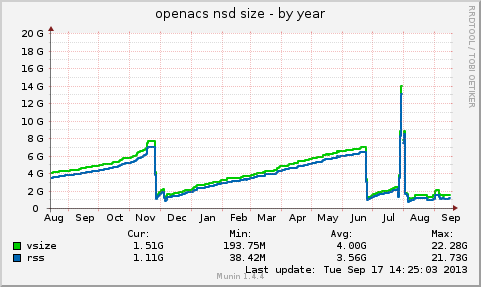Upgraded! It has been quite straightforward thanks to the new scripts.
I report my experience:
OpenAcs installer, during database configuration, probably makes use of unavailable syntax for postgresql 8.x, because failed the first time. Could be a configuration-specific problem tough, as I had to mess around with the conf in the past. Anyway, as I was already towards the idea of upgrading to postgres 9.x and to a supported distro, I switched my Debian repos from squeeze to wheezy and upgraded the distribution so I could installe postgres 9.1 .
After that, I followed the exact steps found in https://openacs.org/xowiki/naviserver-openacs to obtain an oacs-HEAD tree in /var/www
Note that Debian doesn't install sudo by default, so install-oacs.sh should probably have it into requirements to run smooth on Debian.
I then made some tweakings to conform the installation to the 'Debian way' and feel more comfortable:
- moved root of the server to /var/lib/naviserver
- linked config.tcl into /etc/naviserver/conf.d/
- created a sh script to store variables as user, group and port for the instance as was for the repo installation
- modified configurations so they matched instance name, db etc...
- copied /etc/init.d/aolserver4 to /etc/init.d/naviserver startup script and modified so it starts and stops naviserver properly, one instance for each configuration found in /etc/naviserver/conf.d/
- updated the code of the instance to oacs-5-8 branch by cvs
- created a db for the instance
- pointed browser to the instance and installed as usual
Seems a lot of fiddling, but in fact was more a matter of waiting for downloads or compilation...
Now for the interesting part:
I can testify that memory consumption DROPPED. After two simultaneous uploads of 400MB each, the system occupies less than 100MB in resident memory, as stated by top, and inflates and shrinks under need. Before it was constantly increasing every time we tried to upload big files.
What can I say? Very very well! The fruit of all this years of work from you is very at hand now and doesn't require super-human skills to be enjoyied.

